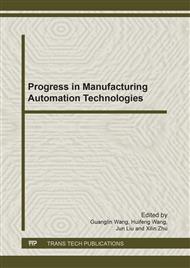p.325
p.330
p.335
p.340
p.344
p.348
p.353
p.357
p.363
Shear and Squeeze Rheometry of Magnetorheological Fluids
Abstract:
The mechanical properties of a magnetorheological (MR) fluid in shearing, compression and shearing after compression have been studied in the magnetic field which is generated by a coil carrying different magnitudes of DC electrical current on a self-constructed test system. The relations of compression stress versus compression strain, yield stress versus compression stress were studied under different magnetic fields. The compressing tests showed that the MR fluid is very stiff at small compressive strains lower than 0.13. The shear yield stress of MR fluids after compression was much stronger than that of uncompressed MR fluids under the same magnetic field. The enhanced shear yield stress of MR fluids can be utilized to design the MR clutch and brake for new structure and will make MR fluids technology attractive for many applications.
Info:
Periodical:
Pages:
344-347
Citation:
Online since:
July 2011
Authors:
Keywords:
Price:
Сopyright:
© 2011 Trans Tech Publications Ltd. All Rights Reserved
Share:
Citation:


